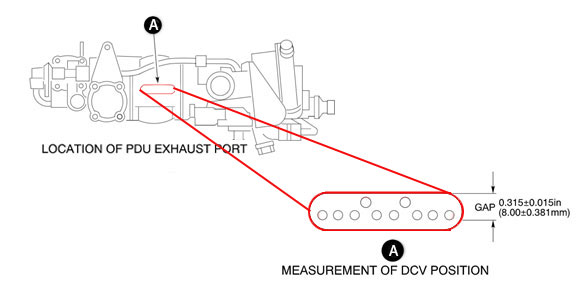Rigging of the TR (Thrust Reverser) system on CL-600 series aircraft can be tedious and time consuming especially if you start off on the wrong foot. The first step to ensuring the rigging is done correctly and alleviating any pitfalls during the process, is to ensure the Pneumatic Drive Unit, or PDU, is rigged and set correctly.
The PDUs are shipped in the stowed position with the rigging set and held in place by the internal brake, but it’s best to check this before you begin the process. Failure to do so could result in incorrect rigging and damage to the PDU or TR.
The internal DCV (Directional Control Valve) operates to direct air to either stow or deploy the TR. The initial position of the DCV is measured to determine the current stowed position of the DCV. If the DCV measurement is not within limits, it means the PDU is either not in the stowed position or not correctly rigged.
Follow the process in the AMM (Airframe Maintenance Manual) chapter 78 to bring the PDU to the stowed position and proceed to check the DCV position. If the measurement is not achieved, do not try to adjust the DCV yourself. Send the PDU to Duncan Aviation Component Services in Lincoln, Nebraska, to have the DCV properly rigged. This is a very precise process that requires very specified tooling and test equipment.
The dimensions shown below are from a specific CL-600 model AMM and are for reference only and may differ based on aircraft configuration. Please refer to chapter 78 of the AMM for specific dimensions.
Call a Duncan Aviation Customer Account Rep for more information at +1 402.475.2611 or 800.2284277.

Incentives & Solutions Available As Gogo Phases Out Legacy ATG Network Technology
Aircraft Sales: Addressing Component Discrepancies During A Pre-Purchase Evaluation
Challenger 600 Series: Troubleshooting Warm Cabin Air Temperature
The Critical Role of Lubrication for Aircraft Hydraulic Systems
Five Steps To Extend The Life Of Your Aircraft's Batteries